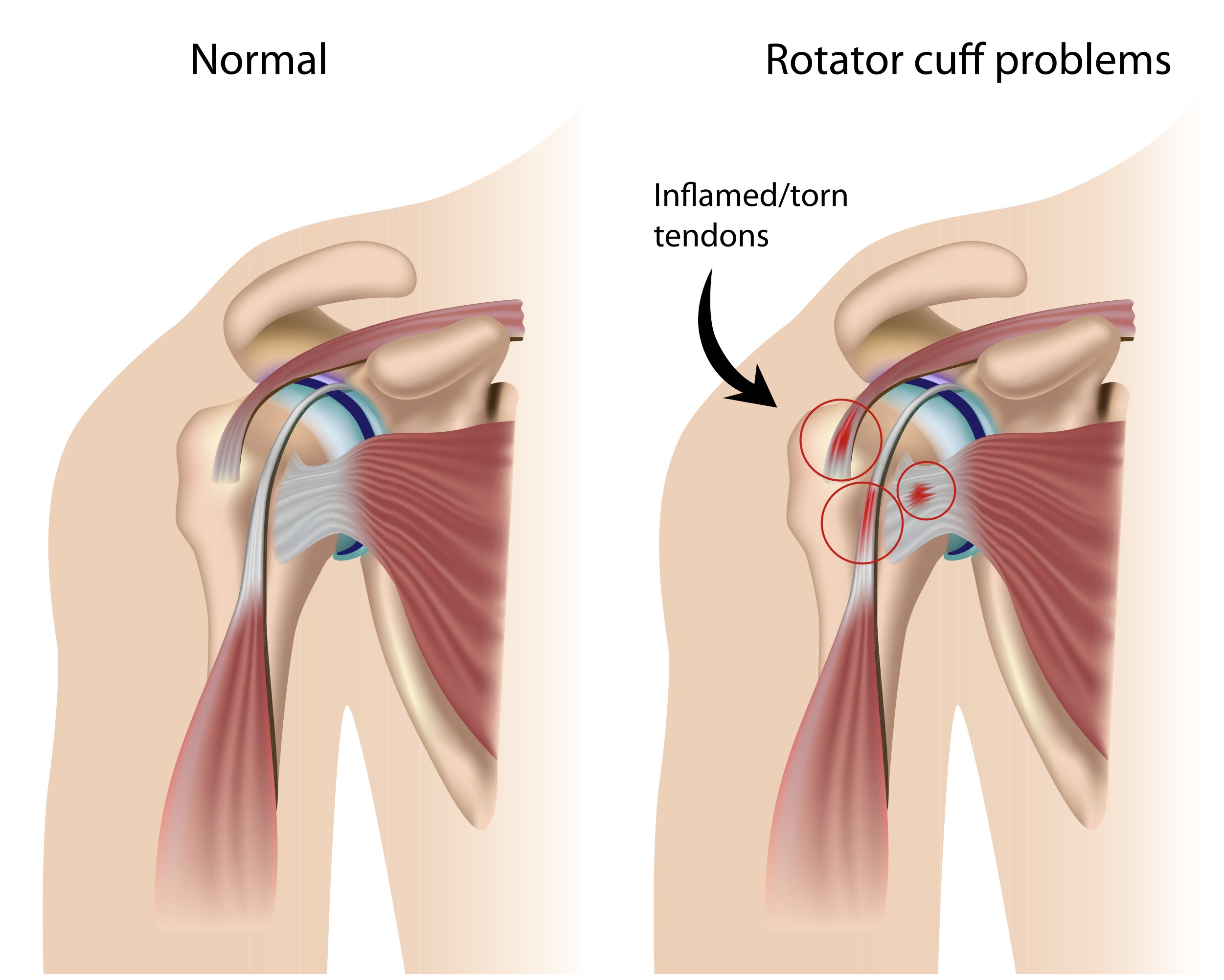What is a rotator cuff tear?
Your shoulder is made up of three bones: your upper arm bone (humerus), your shoulder blade (scapula), and your collarbone (clavicle). The shoulder is a ball-and-socket joint: the ball, or head, of your upper arm bone fits into a shallow socket in your shoulder blade. Your arm is kept in your shoulder socket by your rotator cuff. The rotator cuff is a group of four muscles that come together as tendons to form a covering around the head of the humerus. The rotator cuff attaches the humerus to the shoulder blade and helps to lift and rotate your arm. When one or more of the rotator cuff tendons is torn, the tendon no longer fully attaches to the head of the humerus. In many cases, torn tendons begin by fraying. As the damage progresses, the tendon can completely tear, sometimes with lifting a heavy object. Dr. Austin Chen, orthopedic shoulder and sports medicine specialist in the Boulder, Colorado area specializes in treating rotator cuff tears.

There are different types of tears:
- Partial tear or incomplete tear. This tear damages the tendon, but does not completely sever it.
- Full-thickness tear or complete tear. This tear causes the separation of the tendon from the bone leaving a hole in the tendon.
What is the cause of a rotator cuff tear?
In the case of an acute tear, it is typically caused by lifting something too heavy, or falling down on an outstretched arm. This can also occur in conjunction with another injury such as a broken collarbone or dislocated shoulder.
In the case of a degenerative tear, it is caused by the gradual wearing down of the tendon. This can be a natural process that occurs with age.
What are the risk factors for a rotator cuff tear?
Repetitive motion and physical stress. Performing the same shoulder motions can lead to a rotator cuff tear. Certain sports such as baseball, tennis, rowing, and weightlifting put you at risk for overuse tears. Painters, carpenters, and others who do overhead work also have a greater chance for tears.
Poor blood supply. As we get older, the blood supply in our rotator cuff tendons lessens. Without a good blood supply, the body’s natural ability to repair tendon damage is impaired. This can ultimately lead to a tendon tear.Bone spurs. Bone spurs can occur as we age, and thus increase a chance of a tear. When the arm is lifted the rotator cuff tendon rubs on the bone spur which weakens the tendon making it more likely to tear.
What are the symptoms of a rotator cuff tear?
The most common symptoms of a rotator cuff tear include:
- Pain at rest and at night, particularly if lying on the affected shoulder
- Pain when lifting and lowering your arm or with specific movements
- Weakness when lifting or rotating your arm
- Crepitus or crackling sensation when moving your shoulder in certain positions
What is the treatment for a rotator cuff tear?
Treatment for rotator cuff injuries varies depending on the severity of the injury. Partial tears, tendonitis (inflammation of the tendon) and bursitis are often treated conservatively through the use of physical therapy, rest, ice, anti-inflammatories and, if necessary, steroid injections. Surgery is often recommended for full-thickness tears or for partial thickness tears which fail to improve with conservative measures.
If surgery is required, Dr. Chen performs a minimally invasive arthroscopic surgery called a rotator cuff repair. In arthroscopic rotator cuff repair, the torn tendon is sewn back to the bone of the humerus.
